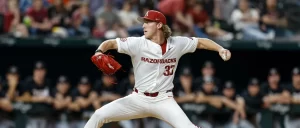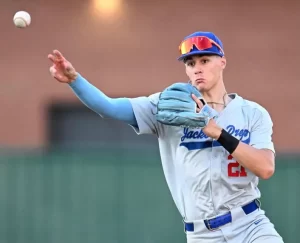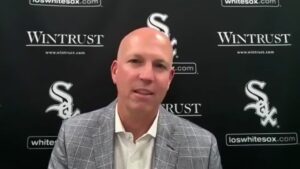An early look at hitting performance from the 2016 draft class
When Nick Hostetler was promoted to Scouting Director last August. we were the first to get an exclusive interview. After Nick spoke with us, plenty of what he spoke on resonated with our readers. Specifically, our readers were enthusiastic about Hostetler’s words towards getting contact bats in the system, getting guys who can get on base, and utilizing metrics more in the draft process. Nick even alluded to one of his draftees walk-to-strikeout ratios, something you don’t even often hear from a Scouting Director. Last month, following Hosteter’s first draft as the Director of Amateur Scouting, I got to speak with him again. Hostetler divulged one of the organizational goals the team had for the draft. The first year Scouting Director looked back on the takeaway from an organizational meeting:
When Rick and I discussed the direction of the amateur scouting department as well as the organization back in August, it was one of the highlights and it was probably the main highlight of our discussion in that we needed to add more of those guys that get on base, control the strike zone and understand the ability to get on base is that golden, and scoring runs is hard to do. The more guys we have like that the better.
We set out with that goal and I think at the end of the day, after the draft was all over, we definitely accomplished that.
Since draft day, the new draftees have had just about two months of play to get their feet wet in professional baseball. While that’s not a huge sample by any means, I wanted to take the performances we had available to us and see the early returns.
METHODOLOGY: Since it’s difficult to take all stats and all short affiliate stops into consideration, I took each player who has had at least 100 plate appearances at a given level. The number 100 is arbitrary in nature, but the idea was to encapsulate all players who have put forth the closest thing to a representative sample. We should note that the Pioneer League, home of the Voyagers, is a offensive-slanted league, although Great Falls home stadium tends to play better for the pitchers.


As you can see from the numbers above, the early returns are indeed strong. Especially when looking at the aggregate .373 on-base percentage from these draftees. Again, the sample at hand is a small one and these players will likely fall from these current marks. And just as important, all but one of those draftees (Curbelo the exception) are college picks, so you do expect a certain amount of success. But seeing as the second lowest on-base percentage of this group is .346, it’s fair to say this draft class is absolutely excelling at getting on base. Hahn, Hostetler and the rest of the baseball operations team met and set this goal, and Hostetler and his net of scouts have made good on it thus far.
The White Sox 2016 draft class has already started to get some critical acclaim for their draftees’ performances and that should only continue. Looking past the offensive performance shown above, the White Sox also have the top performing pitcher in the class in Alec Hansen (14.4 K/9 in 43.2 innings over two levels) and are very likely to have the first pitcher to make the big leagues in the draft class with Zack Burdi (13 K/9 in 29 innings across four levels) yet to face a sustained episode of hiccups.
When I messaged a noticeably excited Hostetler after his first draft night as Scouting Director, he closed his message with, “The future is bright.” To be fair, I think twenty-nine other Scouting Directors would have said something to that same tune on draft night. That being said, there may not be one other Scouting Director seeing the early returns that the young Hostetler has seen so far. The future does indeed seem bright.
Want to know right away when we publish a new article? Type your email address in the box and click the “create subscription” button. Our list is completely spam free, and you can opt out at any time.







